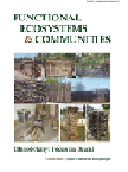Functional Ecosystems & Communities. Ethnobotany: Focus on Brazil
Guest Editor: Ulysses Paulino de Albuquerque. 2008.

This special issue (Ethnobotany: Focus on Brazil) of Functional Ecosystems and Communities tells one and many stories about human interaction with the natural world. Overall, the most significant message is that humanity is an integral part of nature, not separate, and thereby social and ecological systems are linked. The articles are arranged in three main sections. First, a theoretical framework is presented concerning the need for standard units of measure in regional comparisons of people-plant interactions. Second, two overviews, one presenting different approaches to non timber forest product (NTFP) use, focusing on ecological and social aspects and the role of ethnobotany, and the second addressing the management of plant diversity by subsistence or small-scale farmers. Understanding small-scale agricultural systems is important because food production homogenization and market globalization marginalizes many traditional producers, undermines agrobiodiversity, and degrades landscapes. Third, the multidisciplinary nature of ethnobotany is highlighted through nine case studies. Diverse methods for data collection (visual stimuli, checklist and others) and data analysis (subject analyses, similarity index, use value index, multivariate analyses and experimental protocols) are presented. The studies each generate critical data on species and resources for the design of conservation plans and sustainable extraction activities. Documentation of cultural traditions, oral transmission, and knowledge variability increases understanding of plant-people relationships at ecological and sociological levels and reveals the effects of different local contexts on biocultural diversity.
This edition aims to show the relevance of ethnobotany to biodiversity conservation and local knowledge and, at the same time, to encourage new ideas in ethnobotanical fieldwork and its potential role in society.
Dra. Maria de los Angeles La Torre-Cuadros
Informes: www.etnobotanicaaplicada.com.br